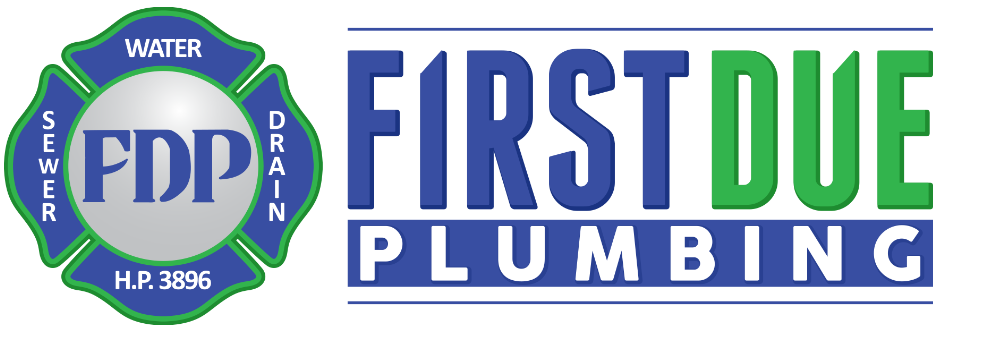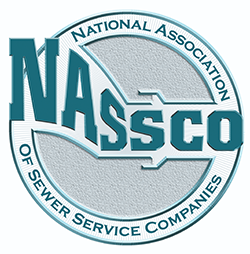Ultimately, funneling all requests by way of a single team slows down the supply of new features. Data mesh promises to deal with a number of the biggest challenges faced by organizations today. The basic thought behind implementing a data mesh is to decouple knowledge from purposes so that each piece of data has its personal independent lifecycle. Data mesh is still in its early stages of improvement, but it has the potential to pivot the greatest way organizations manage and use knowledge. Metadata is the driving drive behind seeing the underlying principles of the information mesh in apply.

The knowledge access is centralized within the information fabric with high-performance server clusters allowing high-performance community and resource sharing. Such an method has an a selection of benefits, together with improved performance, scalability, and availability. In addition, data mesh may help to reduce the complexity of knowledge architectures and make them more manageable. This strategy is designed to deal with the challenges of managing big data, in addition to the growing complexity of information architectures. All the data products have been interconnected and overseen by standardized information governance insurance policies.
Governance And Enablement Staff
Data entry in complicated environments can be sluggish, hindering innovation and efficiency – sometimes taking days or weeks to obtain the wanted knowledge. Domain consultants can’t rapidly respond to user’s requests for timely knowledge merchandise. And by the time the info is available, it is usually outdated – leading to lower confidence in the insights or outcomes anticipated. Data mesh architectures are carried out to empower area groups to shortly and confidently make more timely data-driven decisions. As organizations adopt information mesh, a transformative paradigm for their knowledge structure, the treatment of data as a product is at its heart.
- Each area is answerable for creating, managing, storing, and sharing the info it creates with out counting on a central information group.
- The basic concept behind implementing an information mesh is to decouple data from applications so that each piece of data has its own unbiased lifecycle.
- The data platform team typically owns architectural components such as knowledge shops (databases, data warehouses, non-structured giant object storage), BI and analytics tools, security, coverage automation, monitoring, and alerting.
- Finally, as a company dedicated to studying, we frequently put cash into analysis, harvesting learnings and develop thought leadership to share with our purchasers.
- Thoughtworks has been working with Gilead, an American biopharmaceutical firm, for over a yr in creating the case and planning the implementation for Data mesh.
You’ll gain useful learnings that you can apply with different domains as you roll out your new approach. These studying will embrace things like providing the suitable level of self-service capabilities based mostly on the enterprise wants of every area. This logical structure diagram exhibits how two area teams leverage this mannequin. Let’s use this diagram from the attitude of Domain Team 1 to highlight the vital thing options of this model. These rules enable scale and agility while also guaranteeing information high quality and data integrity throughout your organization. You also can build automation, such as configurations and scripts, to lower the lead time to create knowledge products.
Metadata Administration Methods
You can think of it as a technology layer over your underlying infrastructure that cohesively integrates and presents information to non-technical customers. For instance, decision-makers use the info fabric to view all their knowledge in one place and make connections between disparate datasets. McKinsey defines an information mesh as a data-management paradigm that organizes information in domains, treats it as a product, permits self-service access, and supports these actions with federated governance (Exhibit 1).
A information mesh reverses this move, putting domain knowledge products in the center in order that they drive expertise choices instead. Data engineers sometimes implement pipelines that ingest the info and rework it over a number of steps earlier than storing it in a central knowledge lake. The central group has to make these changes whereas managing conflicting priorities and with limited business area data. The central knowledge staff has specialist data scientists and engineers with limited enterprise and domain data.
Implementing Data Mesh requires careful planning, clear definition of roles and responsibilities, sturdy infrastructure, comprehensive training, and an iterative method. Each step is essential for guaranteeing that the transition to a decentralized information administration model is profitable and brings about the meant benefits of agility, efficiency, and improved information quality. In a data mesh paradigm, the difference is that these instruments are open and available to all information domain teams who need them. This open data architecture democratizes knowledge by giving each team a constant and dependable method for creating their own information merchandise.

When making use of product thinking to data, it additionally extends to the assorted components of data, corresponding to metadata, code, policies, and extra. So, the traits of data as a product — discoverable, addressable, understandable, accessible, trustworthy, interoperable, and safe — apply to those components as well. Instead of treating knowledge as a by-product of enterprise processes, it must be seen as the product itself.
We really feel the paramount resolution to the change and potential issues in today’s knowledge panorama is thru Data Mesh. Here are some brief examples of the Data mesh work we’ve performed https://www.globalcloudteam.com/data-mesh-vs-data-fabric-key-differences-and-benefits/ with our purchasers Gilead and Saxo Bank. All information merchandise have well-described syntax and semantics that follow commonplace naming conventions determined by the organization.
A Data Mesh Entails The Entire Enterprise
Maintaining high requirements of information high quality in a decentralized environment like Data Mesh can also be difficult. Data Mesh and Data Fabric shouldn’t be viewed as mutually unique or competing ideas, but quite as complementary. Data Mesh’s organizational design strategy, combined with Data Fabric’s infrastructure capabilities, can present a complete and efficient framework for managing an organization’s knowledge landscape. Data mesh and data material are both approaches to managing and using data within organizations, but they differ in their architectural focus and execution. Dehghani advocates four core rules that underlie data mesh architecture for data analytics and data science purposes.

This signifies that not everybody may have unrestricted access, even if they manage to get previous safety measures put into place round sure nodes. TimeXtender’s Data Fabric Builder is the spine of your information infrastructure and governance technique. It offers a centralized platform that seamlessly integrates data from various sources, making certain a unified view of your organizational data. With strong knowledge governance capabilities, it allows you to implement knowledge insurance policies, monitor data lineage, and enforce security protocols, safeguarding information integrity and compliance with business regulations.
How Does Information Mesh Work?
Done properly, a knowledge mesh can pace time to marketplace for data-driven applications and provides rise to extra powerful and scalable information merchandise. A main life sciences company, for example, was ready, from a technological standpoint, for the exhausting work an information mesh would require. But what it was unprepared for—and found much more challenging—was harmonizing data-management practices and constructing settlement amongst totally different enterprise groups on which data merchandise and use cases to centralize. Failing to anticipate these points pressured the project to pause midstream, creating confusion and prompting enterprise users to revert to older and fewer environment friendly methods of managing knowledge. A knowledge mesh is a decentralized data structure that organizes data by a selected enterprise domain—for example, advertising, sales, customer service and more—to present more possession to the producers of a given knowledge set.
Additionally, knowledge mesh provides a better stage of information safety, as data is spread throughout multiple stores rather than being concentrated in a single place. It seeks to supply a extra scalable, flexible, and resilient approach to manage information by making a internet of knowledge companies which are loosely coupled and distributed. Data Mesh aims to solve the problems of data availability and accessibility at scale. It enables customers to entry, analyze, and operationalize enterprise insights from any data source, from any location. However, its data workers (business analysts, data engineers, and knowledge scientists) wanted assist with points round knowledge discoverability, understandability, belief, and use. This data can help you set up a product well being score to assess information high quality and trustworthiness.
This strategy supplies a comprehensive view of operations, allowing for proactive responses to disruptions. The result is increased efficiency, decreased costs, and improved productiveness, directly benefiting profitability and market competitiveness. The web’s most helpful articles on analytics engineering and its adjoining ecosystem. Instead of spending sources on building ETL pipelines to move and rework data into specialised repositories, data is saved in its authentic form. Data mesh also has the potential to improve security and privacy, as knowledge is much less likely to be leaked if it is not tied to any specific application. The company then uses a catalog of metadata to trace lineage and provenance, and be sure that the data is accurate, updated, consistent, and trustworthy.

This implies that each set of information, or ‘data product,’ is handled as if it has its personal lifecycle, including phases corresponding to development, maintenance, and retirement. Monolithic knowledge structure is still the norm – even though there are clear drawbacks. Making knowledge self-service means ending the “data monarchy” imposed by monolithic data stores. Finally, as dbt founder Tristan Handy notes, collaboration also becomes tougher in a monolithic system.
Advantages Of Information Mesh
Before implementing a data mesh, it’s essential to evaluate your present infrastructure. This consists of evaluating existing systems and functions as properly as understanding how they interact with one another. Potential issues with interoperability might come up as information meshes turn into extra well-liked among companies.
A knowledge product developer experience airplane simplifies improvement workflows with tools to create, read, version, secure and build knowledge merchandise. A data mesh supervision aircraft helps execute new services throughout the infrastructure for issues including discovering knowledge merchandise or correlating multiple data merchandise collectively. Domain groups use the tools supplied by the data platform team to create their own domain-specific data products. These teams personal their own data pipelines, knowledge contracts and versioning, and reporting and analytics. What the data platform team does not own in an information mesh structure is the person models, workflows, reviews, and processes for a particular information area.
Finance: Threat Management And Buyer Insights
You should choose a cloud supplier with rich information administration companies to support your information mesh structure. You may also want to consider information integration necessities with legacy methods. Data mesh is a decentralized data administration architecture for analytics and data science. Traditional knowledge architectures typically centralize information, leading to challenges in scalability, flexibility and governance. Data mesh proposes a decentralized method where knowledge is handled as a product and managed by decentralized groups or domains within an organization, such as advertising, gross sales and customer support. As previously said, an information mesh is a distributed knowledge architecture, where information is organized by its area to make it extra accessible to customers throughout an organization.
Others begin by defining standards for a data domain, take a look at them for practical applicability, and improve them as wanted. Then, they roll the requirements out in waves to the rest of the organization together with coaching and functionality building to ensure the governance is persistently applied across the group. By shifting from a centralized model to a decentralized one, the responsibility for information is distributed across completely different groups or domains, empowering them to have possession over their own data. This method eliminates the bottlenecks created by a centralized data group and allows domain experts to make choices based on their specific enterprise wants. A knowledge mesh is an architectural framework that solves superior knowledge safety challenges through distributed, decentralized possession. Organizations have multiple information sources from totally different traces of enterprise that have to be integrated for analytics.


